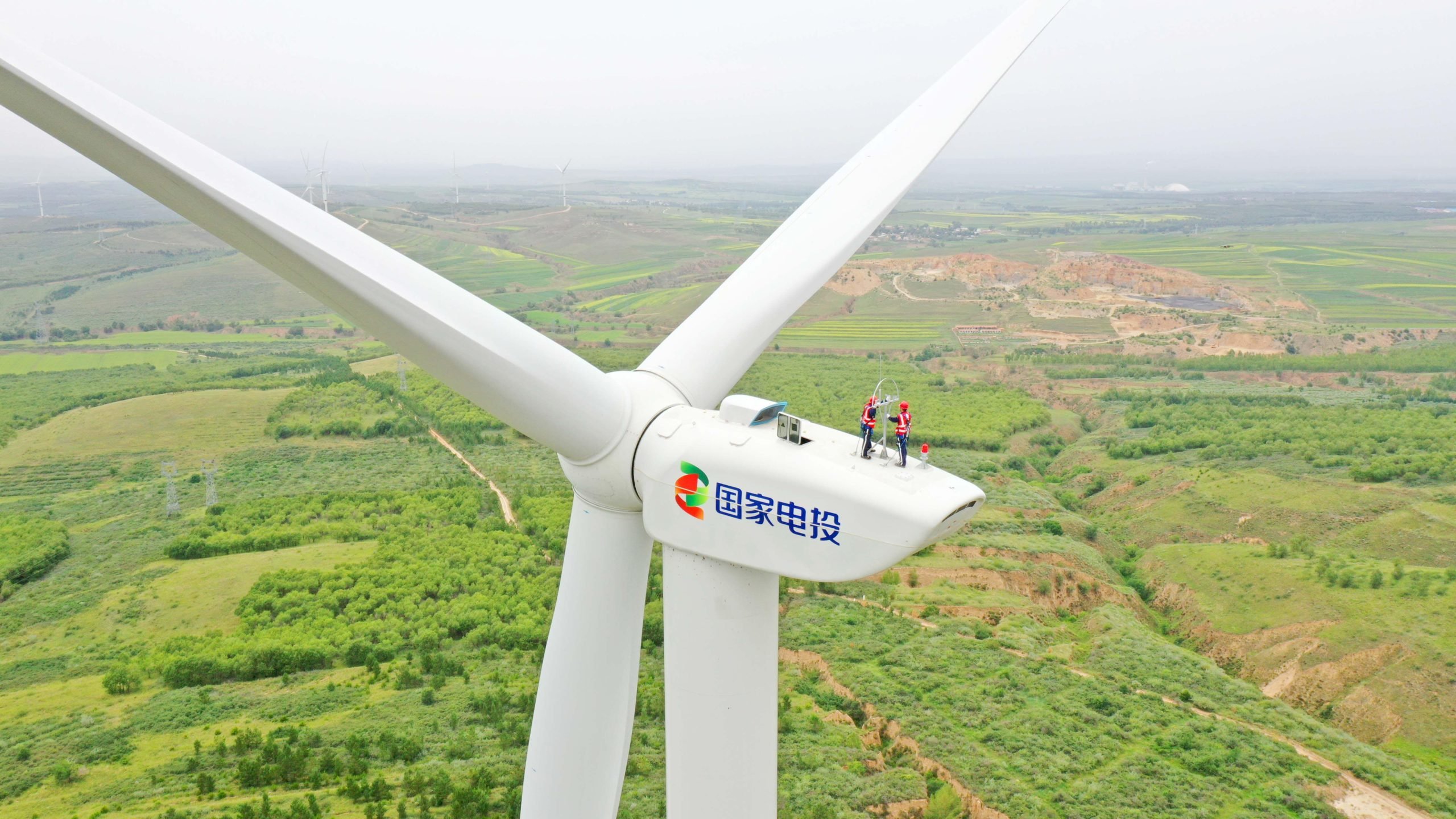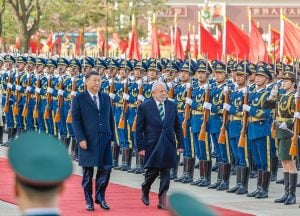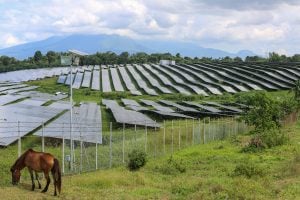The state-owned Beijing Power Exchange is now encouraging energy generators to strike deals that would commit customers to buying a certain amount of green power in a multi-year period.
The move, announced this month after being hinted at in July, will see power-purchase agreements (PPAs) introduced for long-term electricity contracts. PPAs, ranging from 5-25 years, are widely used in the west, but still nascent in China.
Why is the move significant? “It definitely signals that China’s power sector is becoming more liberal”, says David Fishman, senior manager at The Lantau Group energy consultancy.
Most electricity in China is currently purchased by the State Grid Corporation of China, so generators don’t need to go to the market to find a buyer. But China is rapidly moving away from this model and towards a more market-oriented one in which generators sell their electricity in a competitive market. Introducing PPAs is part of that transition.
“This will result in generators more actively participating in the market – either by selling renewable energy into the open market or in a long-term contract – and that represents liberalisation,” Fishman added.
Today, the longest contracts any electricity generators can sign with buyers – whether large corporations, manufacturers, or any other electricity user – are called medium and long-term (MLT). These agreements typically range from a few months to a few years and demand for them is very high. In 2022, 79% of China’s total market-traded electricity was traded on the MLT market, representing roughly half of total electricity consumption. PPAs will further expand the options for long-term procurement of green electricity in mainland China.
A long way to go to mainstream PPAs
The PPA announcement came in the annual update to the Green Power Trading Implementation Rules and more details should follow later this year. There is still a long way to go. A handful of PPA-type deals have been signed in China, Fishman said, but as they haven’t officially been launched, everyone in the Chinese market will need time to learn more about the associated opportunities and risks. This includes generators, end users and regulators.
There are a wide range of PPA arrangements, but in general they all share a few characteristics. Typically, the end-user pays a price for rights to a fixed amount of electricity produced by the generator as well as the environmental attribute certificates – which basically means the right to claim the environmental benefits stemming from renewable energy. (These benefits are represented by a digital token in China called Green Electricity Certificates, or GECs, and they enable companies to satisfy voluntary or mandatory emission-reductions targets.)
PPAs also allow buyers and sellers to agree to long-term pricing arrangements for electricity. Developers are on the hook for installation, operation and maintenance.
PPAs have become the default tool for trading large volumes of electricity in western markets because they provide predictability to buyer and seller. In China, however, the calculus has historically been different.
PPAs are part of China’s broader power-sector reform effort
“In the old days, renewable-energy generators sold all their electricity to the grid at a fixed rate,” explained Sharon Feng, managing consultant of China power market research at Wood Mackenzie, an energy consultant. “They didn’t need to worry about the price or the volume, everything was guaranteed.”
Feng added that until a few years ago “Chinese companies had little incentive to purchase green energy because they had no related [key performance indicator]”. She continued: “From the perspective of power generators, 99% of capacity was owned by state-owned enterprises, who are very risk averse. They prioritised stability over profit.”
Following the publication of Document 9 in March of 2015, China’s power sector has been steadily implementing market reforms. These include trialling electricity spot markets, creating a dedicated market for green-power trading, and power-sector price reforms, which were outlined in the recently released Third Plenum Decisions document. Among other high-level goals, these changes are all in service of creating a national power market by 2030.
Though it remains to be seen what exactly a national power market entails, one detail that has been clarified is that by 2030, renewable-energy generators will need to sell all of their electricity on the market. This marks a sea change in the business model for such generators, Feng notes. From this perspective, PPAs will become hugely attractive on the supply side because they present stability over 20-year periods, allowing generators to sell the bulk of their capacity in one contract and use spot markets for the rest.
On the demand side, PPAs will be hugely beneficial to firms with electricity load in China and a mandate to decarbonise. This is especially true for multinational firms in China, which have been central to efforts to introduce PPAs.
The role of multinationals in developing PPAs in China
Cosimo Ries, a renewable-energy analyst at Trivium China, said: “Multinational corporations have been part of market liberalisation efforts in China for a long time, and the PPA reform efforts were initially largely driven by them.”
One example is German chemical-manufacturing giant BASF which in May 2022 signed a 25-year agreement to supply one of its China factories with renewable electricity at a fixed price. Though the deal was not officially dubbed a PPA, the contract structure is very similar. And it made BASF the first foreign company to secure a long-term renewable-energy purchasing agreement in China.
“Companies like BASF were the first to push the Chinese government to make long-term access to renewable-energy possible,” Ries added. “Many of these companies have decarbonisation commitments from their headquarters, and their preexisting familiarity with the PPA structure means that they favour this contract structure.”
The passage of import restrictions like Europe’s Carbon Border Adjustment Mechanism (CBAM) – a tariff on carbon-intensive goods from abroad – has only served to accelerate this dynamic. Under CBAM, Chinese firms selling to Europe are incentivised to rapidly decarbonise.
These supply-and-demand side factors necessitate PPAs, but it remains to be seen how they will be implemented, what kinds of PPA types will be permissible, and how they will be viewed globally.
Remaining hurdles
One persistent problem for China’s energy transition is that many large electricity users are based on the country’s eastern seaboard, but most of the utility-scale renewable-energy capacity is being developed in the west. Paying for transmission infrastructure to bridge that divide has historically fallen to the State Grid Corporation of China or another utility. But under a PPA in which generator and end user have a more direct relationship, it isn’t clear who is responsible for those costs.
Ries says this so-called “infrastructure-electricity market linkage” is a potential hurdle.
“Part of the problem currently is that the utilities build all of the transmission infrastructure,” he continued. “Right now, there is no mechanism for passing those costs on to end users and no incentive for utilities to develop the transmission infrastructure to support PPAs [as they are not involved in the deal].”
Uncertainty over pricing presents an additional hurdle. It is not yet known if PPAs will be exempt from a 2021 ruling that ties the price of all types of electricity to the price of coal-based electricity, with a 20% margin. If not, finding a price that reflects the potential cost of electricity in 25 years’ time, while staying within the 20% margin of coal prices, will be difficult.
Fishman said that in the past, disagreements over the pricing model has been the stage at which long-term deals have broken down, because “no one wants to leave money on the table”.
It is also unclear whether PPAs will satisfy CBAM requirements, though a CBAM Q&A in August said it should.
Another potential stumbling block is the thorny question of “additionality” – whether a PPA genuinely represents new renewable-energy capacity or if the renewable-energy provided would have been created anyway.
Fishman explained that proving the required additionality in China is difficult. “The claim is always weak in China, because [state-owned enterprises] are going to build renewable capacity no matter what.”
But that was when they knew the grid would buy it. Going forward, developers will need to consider whether there will be a buyer for their electricity, and whether their project will perform well economically. Fishman noted this transition may strengthen the case for additionality, but it’s still too early to tell.
For all these questions, answers should come soon. Fishman and Feng both said the assumption in the industry is that the Chinese government will release PPA templates around the end of 2024. These will likely present a range of PPA structures and set the boundaries for how pricing is structured. This should clarify issues such as whether end users can buy electricity produced in a different province, and if smaller end users can band together and aggregate their demand to sign larger contracts with preferential pricing.








